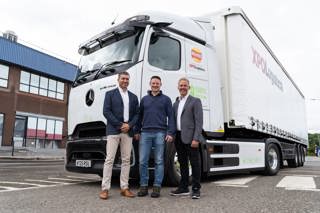By Ashley Tate, managing director of Allstar Chargepass
With the recent expansion of the ultra-low emission zone (ULEZ) and the new 2035 ICE ban approaching, many businesses need to begin the process of decarbonising their fleets. However, according to recent research from Startups reveals, this isn’t something that can happen overnight.
Just as Rome wasn't built in a day, achieving net-zero emissions will require a sustained effort from fleet managers to begin introducing electric vehicles (EVs).
The research into UK fleet managers revealed that the two major barriers faced when switching to EVs are higher costs (26%) and a lack of charging infrastructure (22%).
These statistics underscore the reality that the transition to a green fleet is a gradual process, beginning with a mixed fleet before ultimately becoming a fully EV fleet.
With the prevalent need to begin gradually introducing EVs into fleets, these concerns held by fleet managers must be addressed and mitigated.
Mitigating costs
The financial aspect of integrating EVs into business fleets remains the major concern for fleet managers. However, these costs can be mitigated by implementing cost oversight, and optimisation of VAT reclamation.
Cost oversight and management is an effective approach, as it ensures that managers have a comprehensive breakdown and visibility into driver’s expenses. This can be achieved through keeping a close eye on spending, and exercising control.
There are platforms available to simplify this process for managers as they enable them to regulate spending on an individual basis for each driver in their fleet. These platforms serve as a valuable tool for businesses seeking to monitor and manage a mixed fleet of both EV and fuel expenses, as they collate both in one place.
By consolidating all transactions, regardless of fuel type, into a single HMRC-compliant invoice, the administrative load for businesses is lightened. This also simplifies the process of VAT reclamation, as well as invoicing, thus enhancing overall cashflow management.
Strategically using platforms to gain financial oversight of fleets could allow businesses to minimise the costs associated with decarbonising, and therefore could make the transition to a fully or partially electric fleet more viable.
Simplifying charging at home
The other key concern raised by fleet managers when transitioning their fleets to EVs is a lack of charging infrastructure. This concern results in range anxiety, as drivers and managers alike worry about where they’ll be able to charge their vehicle.
The first method of addressing this concern is through home charging. Allowing drivers to charge their vehicles at home will enable them to set off in the morning with a “full tank” and not have to worry about charging on the road.
This could also lead to significant cost savings for businesses, as if you’re charging at a public charge point, the amount you’re charged is usually a higher cost per kWh compared to charging at home.
In real world numbers, this could save business in excess of £2,000 per year by shifting their charging to from public to home.
However, to effectively take advantage of these cost savings, businesses should use services which integrate with driver’s energy suppliers to calculate the true cost of charging their EV at home and pay the supplier directly.
This ensures that drivers aren’t being left out of pocket, and that businesses are paying accurately for the cost of charging.
Keep drivers on the road
Even with home charging, fleet drivers who undergo longer trips may still experience range anxiety due to a lack of infrastructure.
To eliminate this, fleet managers could use platforms which have maps of all charge points in the UK. This not only helps drivers find and reach their nearest one, but also many platforms allow routes to be planned in time, which means drivers will know exactly where they need to go.
By harnessing the available technology and services, drivers and fleet managers can strategically plan routes, as well as find charge points on the go, which makes the transition to EV more welcome among drivers.
The smooth road to EVs
As the number of ULEZs in the UK expands, and the 2035 ICE ban approaches, businesses could begin the gradual transition to greener fleets.
Addressing cost concerns and charging infrastructure issues with financial oversights, home charging options, smarter route planning and by utilising the technology available, businesses could ensure a smooth and seamless transition to EVs.



















Login to comment
Comments
No comments have been made yet.